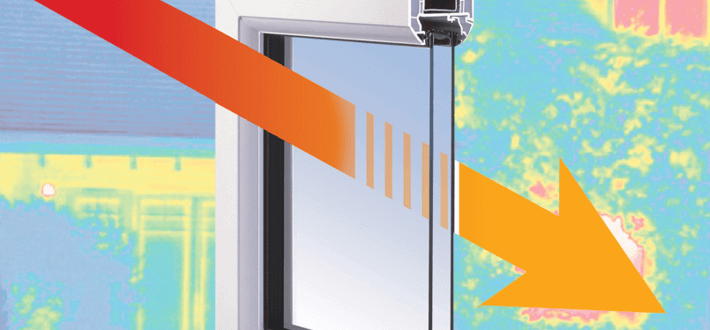Posted on February 21, 2017
Almost any house appliance that we buy these days comes with a rating showing how energy efficient they are, and windows are no different.
So how exactly do we get to that magic A or A+ rating? Well, you find the U-Value, the G-Value and the L-Value, which give you the Energy Index, which then translates into the Window Energy Rating (WER). Simple!
Allow us to explain more…

How is the Window Energy Rating calculated?
In order to explain how the industry calculates the Window Energy Rating, let’s break down the terminology.
U-Value – this is the thermal transmittance through the glass and the lower it is, the more efficient your windows are. Building regulations stipulate that this needs to be 1.6 W/m²K or less for replacement or new windows.
G-Value – otherwise known as the solar factor, this measures the energy gained through the window from the natural sun. Ideally, this should be as high as possible.
L-Value – this determines the amount of air that is leaked through the window as a whole, including the glass and the frame. The frame can be PVC-u, wooden or metal. For high performing windows this should be 0.
The three values above are calculated in kilowatts per hour, per square metre, per year and combine to give the Energy Index.
The Energy Index is the total energy lost or gained through the window. For the most efficient windows, the number should be 0 or above, as minus figures show a loss.
Rating Value – ranging from A+ to G with A+ being the highest, this is the overall rating of the energy efficiency of the window, or the Window Efficiency Rating. This is what you will find most double glazing firms quoting, including ourselves. The Energy Index is translated from a number into a letter, for ease of understanding. For building regulations purposes, new and replacement windows need to be C or above.
Window Energy Ratings Explained, the background…
The British Fenestration Ratings Council (BFRC) first introduced Window Energy Ratings in 2004. They replaced the former system that used solely the U-Value (the thermal transmittance) to demonstrate the energy efficiency of windows. In 2005 the Glass and Glazing Federation (GGF) took over the BFRC and increased the acceptance of this system on a widespread scale. Nowadays, it is used in building regulations to ensure that all new or replacement windows meet a minimum level of energy efficiency as a way to reduce the carbon footprint. The fact that the current rating system has only been around since 2004 makes comparison difficult for people with older windows, although going back much more than 10 years, the wouldn’t be any real comparison anyway, because of the advances in window manufacturing.
Energy Efficiency Means Lower Energy Bills
The Windows Energy Ratings system is a great aid when making the correct choice when you come to replace windows in your home. Although each situation differs according to the size of house and the number of windows, the fact that 25% of heat loss is through windows, it stands to reason that selecting high energy performing windows will save you money of your energy bills.
It is estimated that going up a rating, for example from C-B or B-A will save you approximately 6.5% on your annual energy bill.
